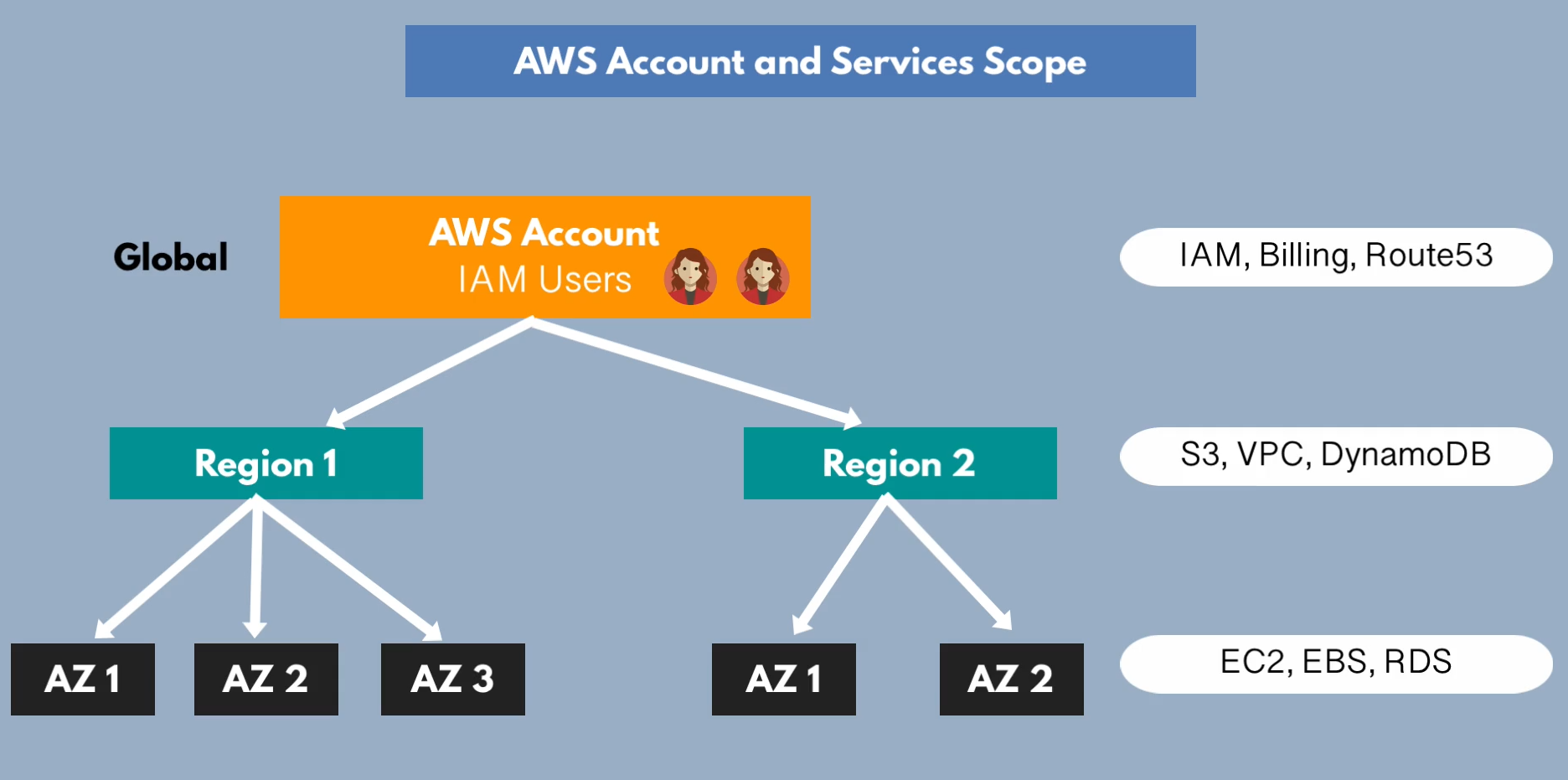AWS Services
1 - Introduction to AWS
Core services:
- Compute:
- EC2
- Storage:
- S3
- Database:
- RDS
- Networking & Content Delivery
- VPC
- Security, Identity & Compliance
- IAM
- Containers
- ECR - registry
- Elastic Kubernetes Service
Scopes of Services
One thing to be mindful is that different services have different scopes.
The AWS scopes are:
- Global
- Regions
- Availability Zone Scopes
- Regions

Create an AWS account
IAM - Manage Users, Roles and Permissions
IAM: Identity and Access Management
Once you create an root account, it's better to create an admin account, with less permissions
- ROOT users
- ADMIN users
- System Users
- ADMIN users
Users vs. Roles: roles are assigned to users.
Policies cannot be assigned to AWS Services directly. You first assign a policy to a role, and then assign the role to the service.
System Users vs. Human Users
VPC - Virtual Private Cloud
-
Scoped in Region
-
VPC spans all the AZs (Subnets) in that region.
-
VPC is your own isolated network in the cloud
-
Virtual representation of network infrastrucutre
-
Set of servers, network configuration moved to cloud
-
Your components have to run in a VPC!
Security Groups
- A Security Groups is scoped in a VPC level.
- Region-Specific: Since VPCs are region-specific, Security Groups are also region-specific.
- Stateful: Security Groups are stateful, meaning if you allow an incoming request from a specific IP address, the response is automatically allowed, regardless of outbound rules.
- Rules: You can define inbound and outbound rules for a Security Group. These rules specify the allowed protocols, ports, and source/destination IP ranges.
Subnets
- Components of a VPC
- Scoped in Availability Zone
- A "private network" inside a network
- A VPC has a range of private IP addresses
- Subnets in a VPC have their own "sub-range" from the VPC range.
- Internet Gateway: connects your VPC to the outside world.
| RFC 1918 name | IP address range | Number of addresses | Largest CIDR block (subnet mask) | Host ID size |
|---|---|---|---|---|
| 24-bit block | 10.0.0.0 – 10.255.255.255 | 16777216 | 10.0.0.0/8 (255.0.0.0) | 24 bits |
| 20-bit block | 172.16.0.0 – 172.31.255.255 | 1048576 | 172.16.0.0/12 (255.240.0.0) | 20 bits |
| 16-bit block | 192.168.0.0 – 192.168.255.255 | 65536 | 192.168.0.0/16 (255.255.0.0) | 16 bits |
Private vs. Public Subnets: firewal rule config makes it either private and/or public subnet.
CIDR: range of IP addresses
Cool links:
EC2
Steps to launch an instance:
- Add Tags
- Choose OS Image
- Choose capacity
- Network configurations
- Configure Security Group
- Add storage
Using AWS CLI to create an EC2 instance:
aws ec2 run-instances \
--image-id ami-xxxxxx \
--count 1 \
--instance-type t2.micro \
--key-name MyKeyPair \
--security-group-ids sg-xxxxxx \
--subnet-id subnet-xxxxxx